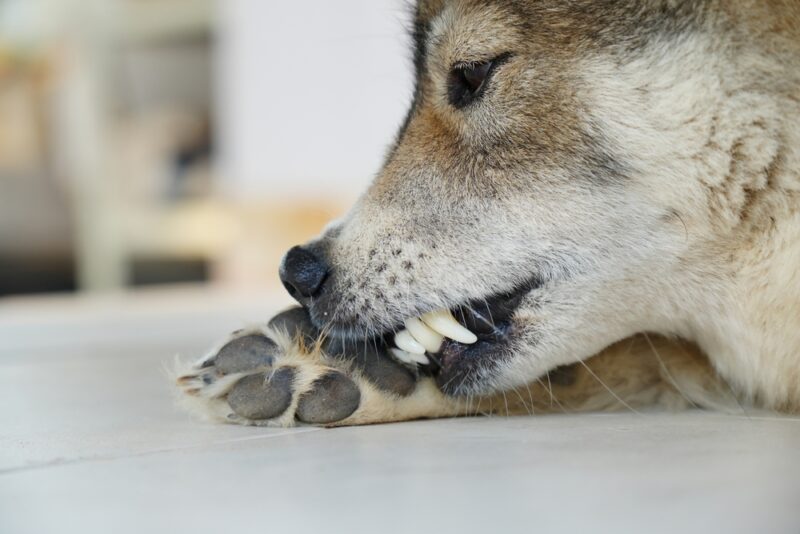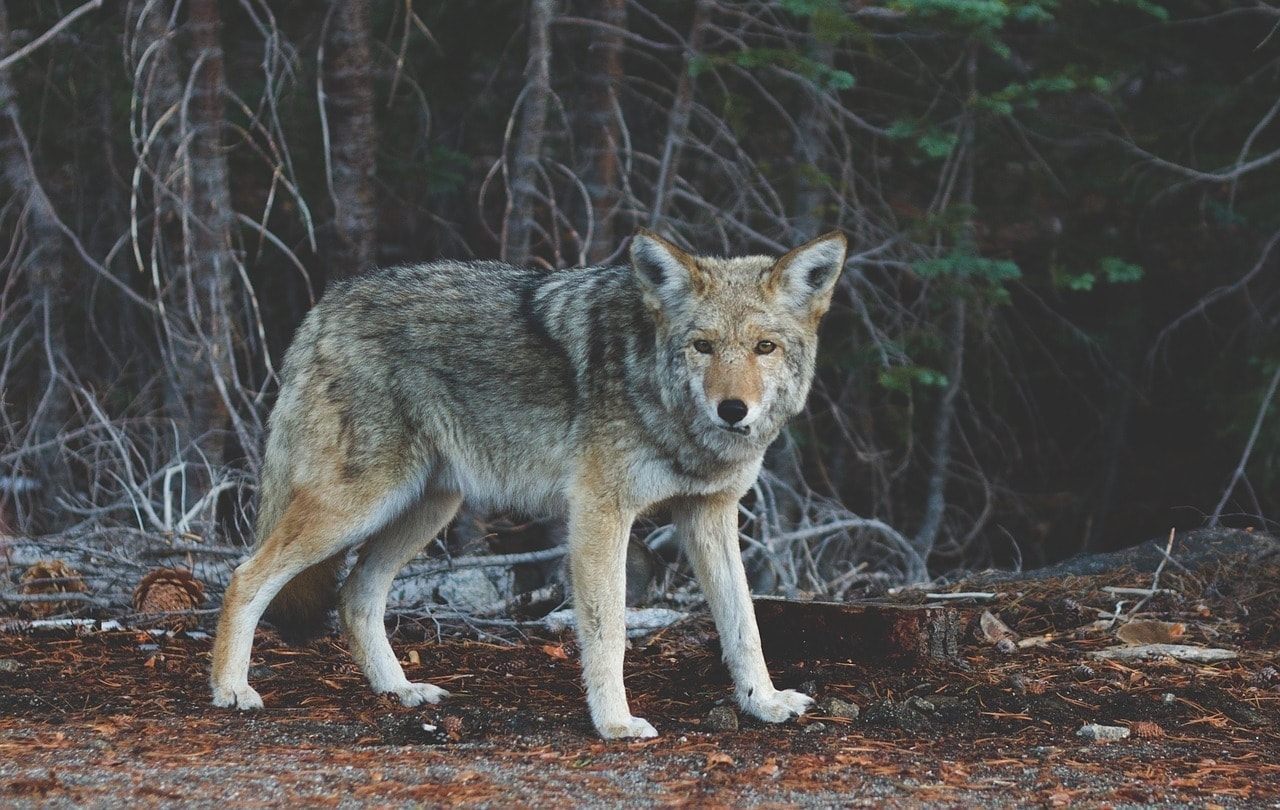Saarloos Wolfdog: Pictures, Care Guide, Temperament & Traits

Updated on
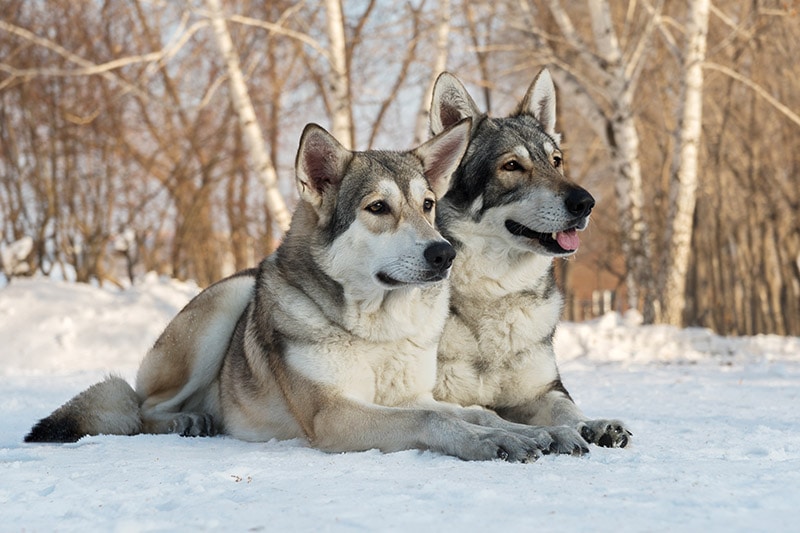
The Saarloos Wolfdog is named after the breeder who created them: Leendert Saarloos. This remarkable breed is a combination of German Shepherd and wolf, which is enough to pique anyone’s interest. As you can imagine, the Saarloos Wolfdog can be a loyal pet, but only in the right hands.
The Saarloos Wolfdog is a strong, active breed with significant care needs and requires an owner and leader who understands them. If you’re up for the challenge, we have all the information you need to care for this powerful canine.
Breed Overview
| Height: | 24–28 inches |
| Weight: | 70–90 pounds |
| Lifespan: | 10–12 years |
| Colors: | White, brown, cream, silver, gray |
| Suitable for: | Active families, experienced owners, Houses with yard space |
| Temperament: | Intelligent, active, loyal, independent, protective, curious, affectionate |
The Saarloos Wolfhound was created in 1935 by Leendert Saarloos, a Dutch breeder. Saarloos was particularly devoted to the German Shepherd but felt most were too tame, so he sought to reintroduce some of the breed’s natural traits to enhance their working capacity.
He thus combined a female wolf that he purchased from the Rotterdam Zoo with a German Shepherd, and although the outcome fell short of Saarloos’ expectations, future crossings were more successful.
While these dogs have wolves in their genetic makeup and undoubtedly retain some of the wolf’s physical features and behaviors, the Saarloos is gaining popularity as a companion dog and can make a fantastic pet for individuals, families, and knowledgeable dog owners.
Sarloos Wolfdog Characteristics
Saarloos Wolfdog Puppies

Saarloos Wolfdogs are still a relatively rare breed, and finding a breeder can be challenging, but not impossible. A simple Google search should help you find a breeder close to you. Otherwise, a German Shepherd breeder may help point you in the right direction.
Shelters and rescues may also have Saarloos Wolfdogs, but they will likely be older, and not much may be known about their history. It is important to start socializing and training your Saarloos Wolfdog puppy as soon as you get them home.
The puppy has to know right away that you are the leader of the “pack”; otherwise, it might assume that position. The Saarloos Wolfdog is very curious, playful, and energetic and will need a lot of extra care and attention.
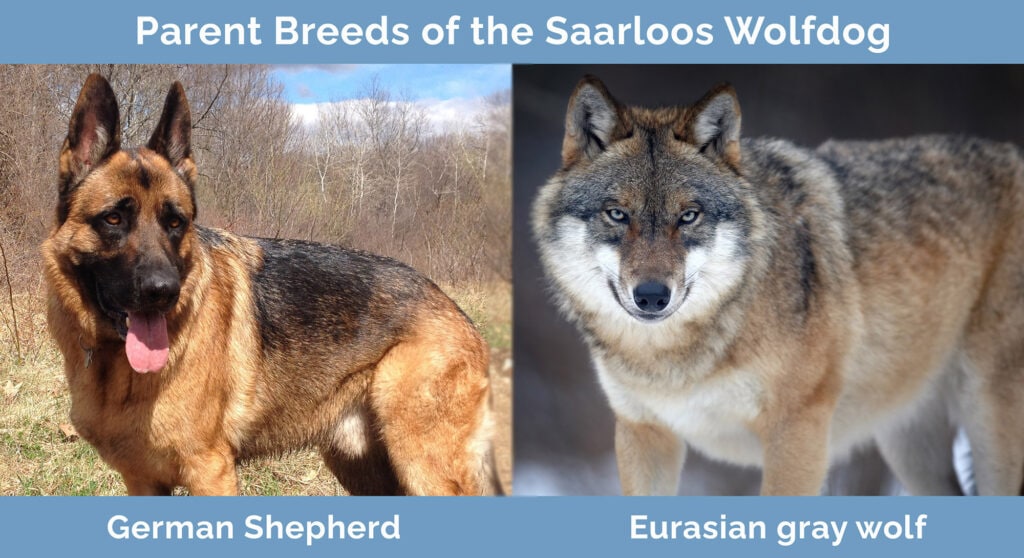
Temperament & Intelligence of the Saarloos Wolfdog
As you can imagine, combining a wolf and a German shepherd will result in a highly intelligent, energetic canine. They are also curious and independent, which makes daily physical and mental stimulation very important.
A bored dog can be a destructive one. In the correct environment, they can develop into well-behaved and friendly dogs, but they are very high maintenance and powerful, so they need to be handled by someone who knows what they’re doing.
They are also loving companions and easily form loving bonds with their owners. They are highly devoted, and because of their pack mentality, they can grow up to get along with other dogs.
While the Saarloos is independent, they can also suffer separation anxiety if left alone for too long. They are also regarded as very sensitive and reserved dogs, so while they are wary of strangers, they will more likely run away than show hostility.
Are These Dogs Good for Families? 👪
The Saarloos Wolfdog can be socialized and trained to be an excellent family companion in the proper environment. They thrive with an active and experienced owner devoted to consistent training. They form strong bonds with their owners, but they look up to the leader of the pack, so you need to establish that role very soon.
They are protective dogs but have no drive to harm anyone without reason. This may make them suitable for some kids who know how to behave and treat these types of dogs, but perhaps not for smaller, inexperienced kids.
The Saarloos Wolfdog is not a good companion for people who are out for extended periods of time since they dislike being left alone. They will, however, thrive in a busy home where a lot is going on. The Saarloos Wolfdog is unsuitable for first-time owners and those used to training smaller dogs.
Does This Breed Get Along With Other Pets?
The Saarloos Wolfdog is a pack dog by nature, so they will typically get along with other dogs as long as they are correctly socialized from a young age. It is best if your Saarloos Wolfdog grows up with other pets. Having other dogs around and someone to play with is beneficial to them. It is not suggested that you keep these puppies in a house with other small animals, like cats, because they have a solid predatory drive.
Things to Know When Owning a Saarloos Wolfdog:
Food & Diet Requirements 🦴
Like all dogs, your Saarloos Wolfdog will require high-quality, well-balanced food that is life-stage and breed-appropriate. They will typically need to consume 3 to 4 cups of food every day, but your dog’s daily intake will depend on their activity level, metabolism, age, and health issues.
Consult your veterinarian to discuss the best diet choices, your dog’s caloric needs, and any supplementation. It is important for your dog to have access to fresh and clean water daily.
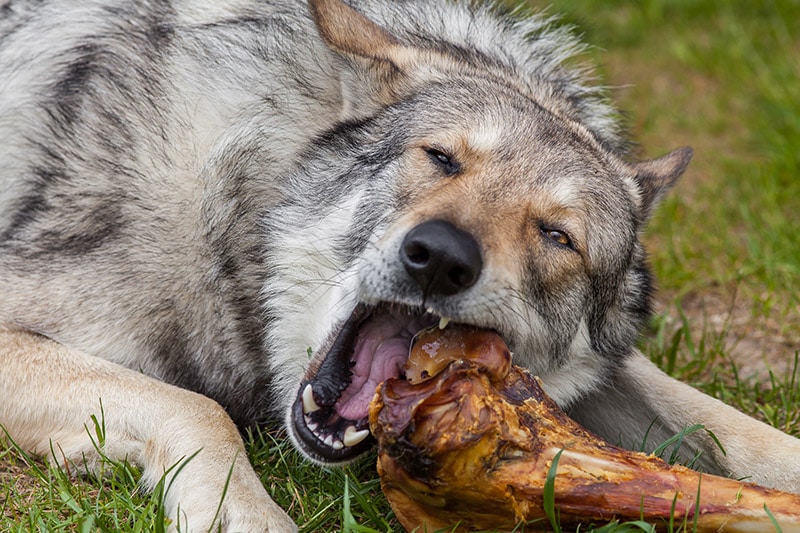
Exercise 🐕
As a highly active breed, your Saarloos Wolfdog will require up to 70 minutes of activity every day. They will be content going for a long walk, running, hiking, and playing with their owners or other dogs in a large yard or park.
The Saarloos Wolfhound requires a lot of exercise and freedom of movement to maintain a healthy disposition. They are a smart breed that also needs regular mental stimulation, and games that test their physical and mental stamina will help keep them happy, healthy, and entertained. They can be kept engaged by playing fetch, solving puzzle toys, or learning new tricks.
When exercising a puppy, do so with caution and avoid high-impact activities since their bones and joints are still growing. Excessive exercise can cause joint issues when your puppy matures.
Training 🎾
As a highly intelligent dog, the Saarloos Wolfdog can be easy to train. They need to start training at an early age and require a firm and confident owner who can own the role of the pack leader. They thrive when they have boundaries and consistency.
They enjoy being the center of attention and will strive to please their owners, but again, they can be stubborn, so you must be firm and consistent with them. Although the Saarloos is not naturally aggressive, they can be rather domineering.
Therefore, you should stop any undesirable behaviors in their tracks as soon as they appear. The greatest method to stop them is to ensure they receive plenty of mental and physical stimulation.
From the time they are puppies, you should calmly and gradually introduce them to new sights, noises, locations, smells, people, and animals. They can develop into a well-rounded dog that is pleasant and friendly.

Grooming ✂️
The Saarloos Wolfdog is considered a moderate shedder, requiring a brush once or twice a week to remove loose hairs. Brushing needs to be increased during shedding season, which happens twice a year. Regular baths are not necessary, and if you bathe your Saarloos too much, it will strip the natural oils, which can cause itching and irritation.
Your Saarloos Wolfdog requires teeth brushing a few times a week and dental chews and chew toys to help prevent plaque buildup. Their nails should be trimmed every 4 to 6 weeks.
Health and Conditions 🏥
The Saarloos Wolfdog has a lifespan of 10–12 years and is a relatively healthy dog. However, like most dogs, there are a few hereditary health issues that owners should be aware of. Although not all of these problems will occur, being aware of them will help you be ready to give your dog the best care possible. Potential health issues include the following:
- Allergies
- Ear infections
- Hip dysplasia
- Spinal spondylosis
- Degenerative Myelopathy
- Progressive retinal atrophy
- Cataracts
- Glaucoma
- Cancer
- Bloat
It is important to keep up with routine veterinary visits to detect any conditions as early as possible and to ensure that your dog is healthy and thriving. Your dog should also receive vet-approved tick, flea, and worm preventatives and all necessary vaccinations.
Male vs Female
When it comes to choosing between a male and a female, it typically comes down to your preference. Generally, females are sweeter, friendlier, and gentler than their male counterparts. Males are more territorial, confident, and proud.
However, males may display more aggressive and territorial behavior, especially if they have not been neutered. Females can also be more problematic if they have not been spayed. Intact males can wander in search of a female on heat and often show unwanted sexual behaviors such as mounting and humping. Intact females will go through a heat cycle twice a year.
3 Little-Known Facts About the Saarloos Wolfdog
1. Despite Their Intimidating Appearance, Saarloos Wolfdogs Are More Shy Than Aggressive
Even though the Saarloos may be wary of strangers, they typically run away when they feel threatened as opposed to getting defensive and hostile.
2. The Saarloos Wolfdog Is Not for First-Time Owners
The Saarloos Wolfdog is an incredible breed that requires a firm and experienced owner to take on the pack leader role. They are pack dogs and rely on an alpha’s instructions and consistent boundaries.
3. The SaarLoos Wolfdog is Rare
While there are certainly breeders out there, they may be hard to find, and you may need to have a puppy shipped or flown over if you have your heart set on a Saarloos Wolfdog.
Final Thoughts
The Saarloos Wolfdog is undoubtedly spectacular, but they are not the perfect companion for everyone. Along with an experienced owner, they will thrive in a home with a large yard or park nearby. Grooming the Saarloos may be the easiest part of their care routine, but when it comes to training, feeding, and activities, they need someone capable of handling them.
The Saarloos Wolfdog may be hard to find, but if you are lucky enough to bring one home, a well-behaved, socialized, and trained Saarloos will make a wonderful and affectionate companion, as well as a strong and confident sidekick to any owner who understands them.
Featured Image Credit: yykkaa, Shutterstock




